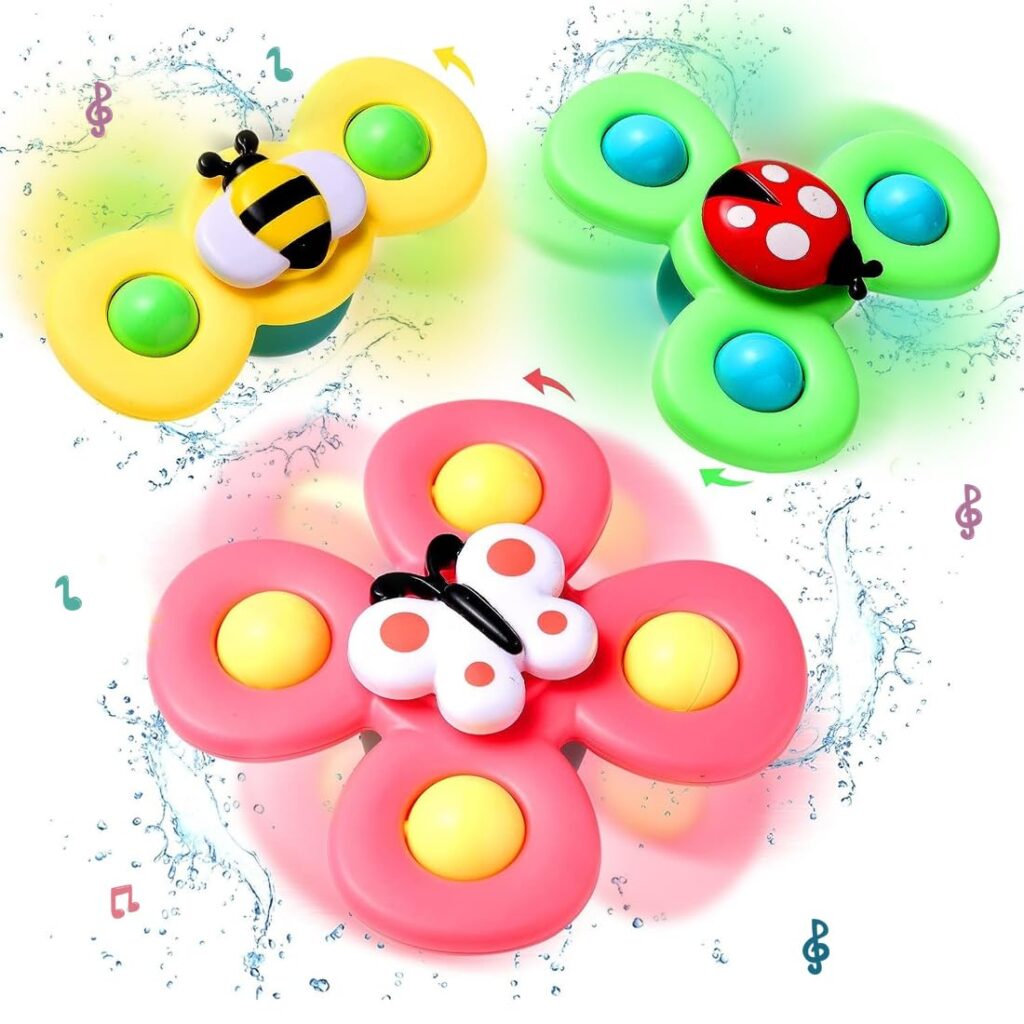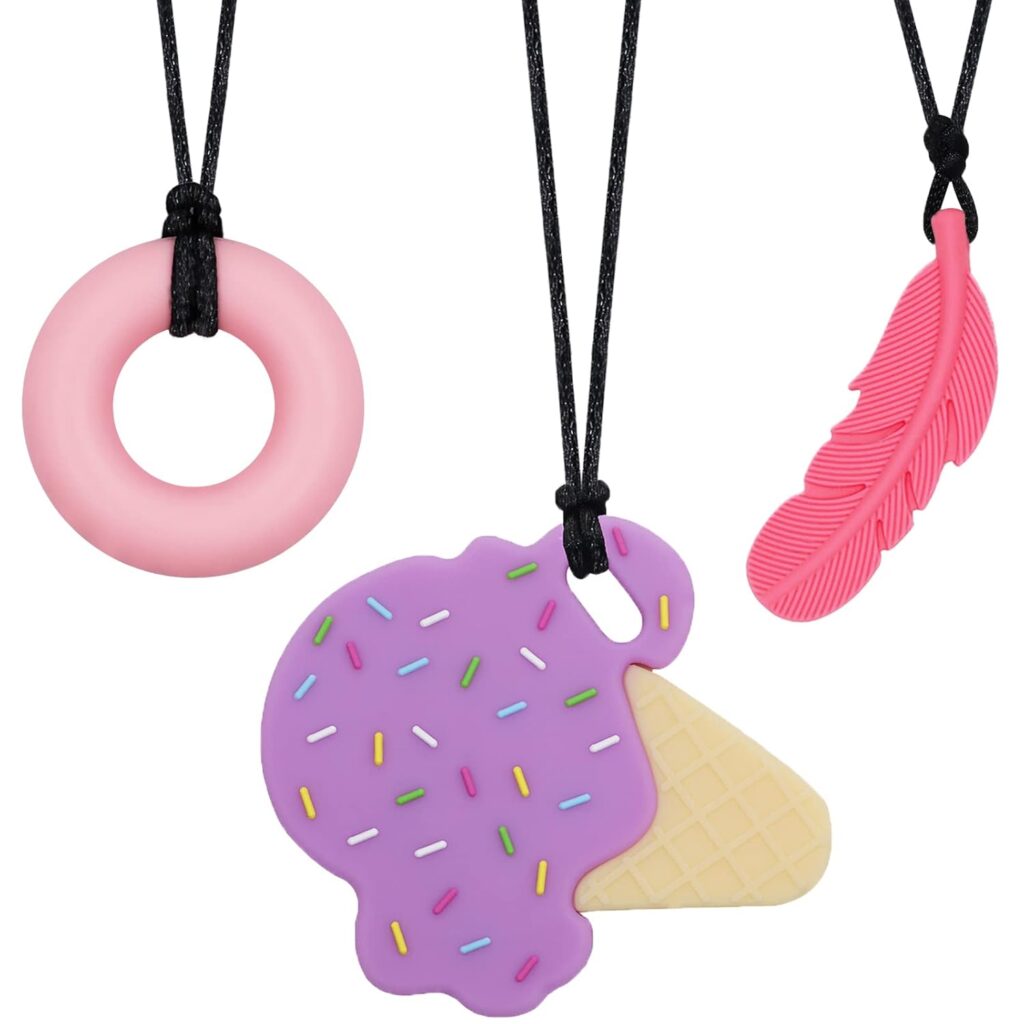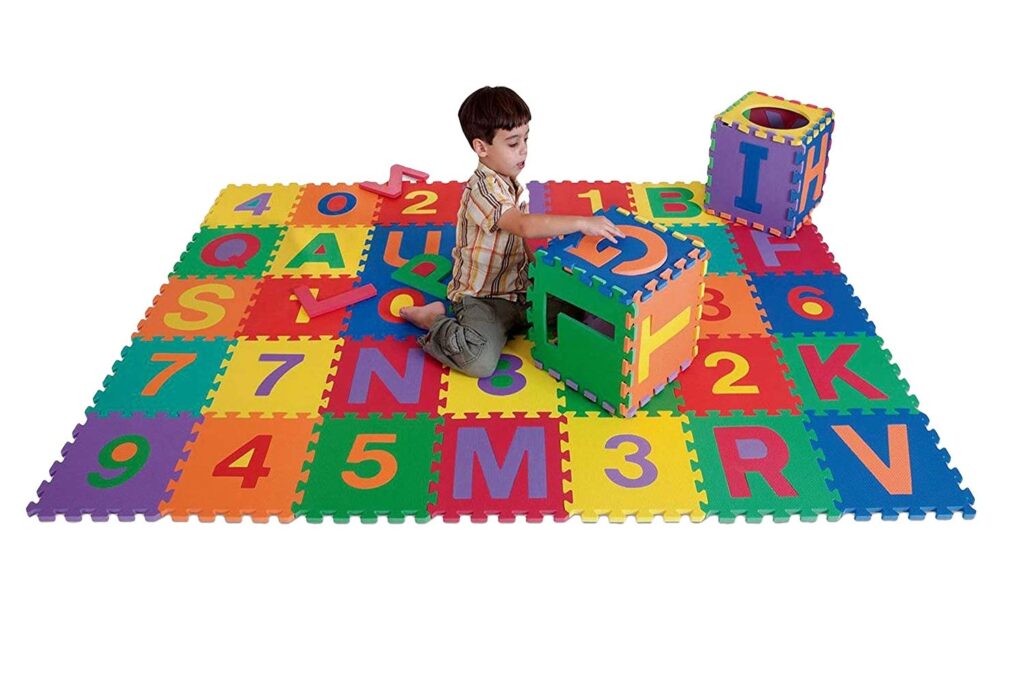Raising a sensory-seeking child comes with its own challenges and rewards. Sensory-seekers seek out intense sensory experiences and are constantly looking for ways to activate their senses. This can result in behaviors that seem overwhelming or difficult to manage. However, with the right strategies in place, you can create a supportive and nurturing environment that meets your child’s sensory needs. In this blog we will explore various topics along with 5 powerful ways to deal with sensory seeking child, so you can help your child to become more balanced and better understand and support his individual needs.

Here are the topics we will discuss:
Understanding Sensory Seeking
Sensory seeking is a term used to describe people, often children, who seek sensory stimulation. Sensory stimulation can come from any of the five senses: touch, taste, smell, sight, or hearing. For sensory seekers, these stimuli are crucial to feeling balanced and grounded. Unlike other people who become overwhelmed by sensory stimulation, sensory seekers actively seek out ways to activate their senses.
Key Characteristics of Sensory Seeking
- Craves Intense Sensory Experiences: Sensory seekers often enjoy and seek out intense sensory experiences. This may include activities involving loud noises, bright lights, or strong smells.
- High Activity Levels: These children are very active and tend to be constantly moving, jumping, running, and climbing. They seem to have endless energy.
- Touching Everything: Sensory seekers often touch everything around them. They may rub or scratch objects, press them against surfaces, and hold objects for long periods of time.
- Deep Pressure Seeking: Many sensory seekers enjoy activities that involve deep pressure, such as being squeezed, hugged tightly, wrapped in a blanket, etc.
- Risk-Taking Behavior: Because of their high sensation needs, sensory seekers may engage in risky or seemingly dangerous behaviors to get the stimulation they crave. This might include climbing tall structures or jumping from high places.
Why Sensory Seeking Occurs
Sensory seeking may be a result of the way the brain processes sensory information. Sensory seekers’ brains may not receive enough sensory input from the environment or may process sensory input differently, resulting in a constant need to seek out more sensory experiences in order to feel satisfied and balanced.
Understanding the Root Causes of Sensory Seeking in Kids
The behavior of seeking sensory input in children can be shaped by a variety of elements. Grasping the fundamental reasons behind this behavior can aid in crafting effective approaches to assist these kids.
Here are some of the primary reasons:
1. Brain Structure Variations : A key reason for sensory seeking behavior in children is differences in brain structure that affect how the brain receives and responds to sensory information. Sensory processing disorder (SPD) is a condition characterized by the brain’s difficulty in processing sensory information. Children with SPD might look for sensory experiences because their brains are less responsive to typical sensory inputs.
2. Autism Spectrum Disorder (ASD): Many kids with autism spectrum disorder (ASD) show behaviors of seeking sensory input. These children often have unusual ways of processing sensory information, leading them to seek out sensory experiences to feel more stable and regulated. For instance, they might find joy in spinning, rocking, or doing repetitive actions.
3. Attention Deficit Hyperactivity Disorder (ADHD): Children with ADHD might also exhibit behaviors of seeking sensory input. The hyperactivity and impulsiveness common in ADHD can push a child to always seek out new and stimulating sensory experiences. This can help them control their energy and stay focused, though sometimes in ways that are not appropriate.
4. Issues with Development: Children with developmental delays or disorders might show sensory seeking behaviors as a way to explore and interact with their surroundings. These behaviors can serve as a way to compensate for other developmental delays, such as in motor skills or communication.
5. Hereditary Influences: Genetics can also play a part in sensory seeking behaviors. Children might inherit traits related to sensory processing from their parents. A family history of sensory processing issues or related conditions can increase the chances of a child showing sensory seeking behaviors.
6. Influence of the Environment: The setting in which a child is raised can also shape sensory seeking behaviors. Children who have faced trauma, neglect, or inconsistent caregiving might develop sensory seeking behaviors as a way to cope. Engaging in sensory activities can offer comfort and stability in these challenging situations.
7. Insufficient Sensory Stimulation: Not receiving enough diverse sensory stimulation during early childhood can lead to seeking out more intense sensory experiences. Children who haven’t been exposed to a variety of sensory experiences might look for more intense sensory input to compensate for this lack.
8. Personal Variations: Every child is unique, and their preferences for sensory experiences can differ greatly. Some children are naturally drawn to sensory seeking due to their individual temperaments and personalities. They might simply enjoy and prefer activities that are more sensory-rich compared to their peers.
Understanding the causes of sensory seeking behavior is essential for providing the right support and interventions. By recognizing the underlying factors, parents, caregivers, and educators can create environments and routines that meet the sensory needs of these children, helping them to thrive and develop in a balanced and healthy way.
Effects on Everyday Activities
For kids who crave sensory experiences, this ongoing demand for sensory stimulation can affect different parts of their everyday activities, such as:
- Academic Achievement: They could struggle to remain seated or concentrate in school, resulting in difficulties with education and conduct.
- Interpersonal Relationships: Children who seek sensory experiences might have difficulty grasping the concept of personal space or interpreting social signals, impacting their relationships with other children.
- Home Environment: The necessity for continuous sensory stimulation can be tiring for the child and their family, causing tension and annoyance.
Managing Sensory Seeking
Understanding sensory seeking is the first step in managing it effectively. By recognizing the behaviors associated with sensory seeking and implementing strategies to provide appropriate sensory input, parents, caregivers, and educators can help sensory-seeking children thrive. Providing a supportive and structured environment can make a significant difference in the child’s ability to cope with their sensory needs and engage positively in their daily activities.
5 unique strategies to manage and nurture a sensory-seeking child
Understanding and addressing their needs can lead to a more harmonious and supportive environment for both the child and the family. Here are 5 powerful ways to deal with sensory seeking child.
1. Build a Stimulating Environment
A stimulating environment can offer the kind of engagement that children who seek sensory input need. Here are a few suggestions:
- Sensory Bins: Fill containers with materials like rice, beans, sand, or water, and add small toys or tools for exploration.
- Textured Surfaces: Include items with various textures such as soft blankets, rough carpets, and smooth surfaces.
- Visual Interest: Use vibrant, contrasting colors and intriguing patterns in the area where your child plays.
- Auditory Environments: Play music with different rhythms and speeds, or use white noise machines for background sounds. By creating this kind of space, you’re meeting their sensory requirements, which can help decrease disruptive behaviors and offer a healthy way for them to expend their energy.
2. Integrate Sensory Activities into Everyday Life
Frequent sensory activities can help regulate the behavior of a child who seeks sensory input, and enhance their concentration. Consider the following activities:
- Heavy Work: Tasks like carrying groceries, pushing a shopping cart, or assisting with chores can provide input from the sense of touch.
- Swinging: Utilize a swing set or hammock to offer movement-based sensory input. Water Fun: Bath time or playing with water toys can be both soothing and engaging.
- Art Projects: Encourage activities such as finger painting, working with clay, or drawing with various textures. Incorporating these activities into their daily schedule ensures they receive consistent sensory input, aiding in the proactive management of their sensory needs.
3. Utilize Sensory Tools and Toys
There’s a wide range of sensory tools and toys made for children who seek sensory input. This is one of the 5 powerful ways to deal with sensory seeking child. Some well-liked options are:
- Fidget Spinners and Stress Balls: These can assist with focus and provide tactile stimulation.

View on Amazon click here
- Chewable Jewelry: Safe for chewing, these can fulfill oral sensory needs.

View on Amazon click here
- Weighted Blankets: Offer deep pressure input, which can be soothing.

View on Amazon click here
- Sensory Mats: Mats with various textures can be placed on the floor for the child to walk or crawl on.

View on Amazon click here
Introducing these tools can help your child self-regulate and remain composed, especially in situations that might otherwise be overwhelming.
4. Develop a Sensory Plan
A sensory plan is a customized strategy of physical activities and adjustments made to meet a child’s sensory needs. It can be crafted with the assistance of an occupational therapist and might include:
Regular Breaks: Scheduled times for sensory activities throughout the day.
Sensory Break Stations: Specific areas at home or school where the child can go to participate in sensory activities.
Calming Methods: Activities like deep breathing, stretching, or yoga can help the child relax when feeling overstimulated.
A well-organized sensory plan can help the child maintain a balanced sensory input, reducing stress and improving their overall well-being.
5. Engage in Communication and Teamwork with Experts
Engaging with experts who are knowledgeable in sensory processing can be incredibly beneficial. Think about:
- Occupational Therapy: An occupational therapist can evaluate your child’s sensory requirements and offer customized approaches and exercises.
- Speech Therapy: Should your child experience sensory difficulties with oral stimulation, a speech therapist can assist.
- Behavioral Therapy: A behavioral therapist can assist you in formulating plans to handle difficult behaviors. Consistent interaction with these experts guarantees that your child’s sensory needs are addressed comprehensively and efficiently.
Caring for a child who seeks sensory input can demand patience, innovation, and steadiness. By establishing an environment rich in sensory experiences, integrating sensory activities into their daily schedule, utilizing sensory aids, following a sensory diet, and working together with experts, you can cater to your child’s distinct needs and foster their growth. Every child is unique, necessitating the customization of these approaches to align with your child’s individual likes and reactions.
Conclusion
The path of guiding a child who is highly sensitive to sensory input demands patience, innovation, and a profound grasp of their distinct requirements. By establishing an environment filled with sensory stimuli, engaging in sensory activities regularly, using specific tools, devising a tailored sensory plan, and working together with experts, you can offer the necessary support and framework for your child’s success.
Adopting these methods not only aids in managing their sensory desires but also promotes their growth and happiness. Keep in mind that each child who is highly sensitive to sensory input is different, and what may be effective for one might not be for another. Remain adaptable, pay attention to how your child reacts, and modify your strategy accordingly. With affection and steadiness, you can transform challenges related to sensory sensitivity into chances for development and bonding.
You may also like Best dog food in india for 2024
FAQs
1. What is sensory seeking behavior in children?
Sensory seeking behavior in children involves craving intense sensory experiences. These children often seek out activities that stimulate their senses, such as touching various textures, making loud noises, or engaging in repetitive movements.
2. How can I tell if my child is a sensory seeker?
Signs of a sensory seeker include high activity levels, constant movement, touching everything, enjoying deep pressure activities, and seeking out intense sensory experiences like loud sounds or bright lights.
3. Is sensory seeking behavior the same as ADHD?
While sensory seeking behavior can be present in children with ADHD, they are not the same. Sensory seeking specifically relates to craving sensory input, whereas ADHD involves broader issues with attention, hyperactivity, and impulsivity.
4. How can I create a sensory-rich environment at home?
To create a sensory-rich environment, include items like sensory bins with rice or sand, textured surfaces, visually stimulating decorations, and soundscapes with music or white noise. Providing a variety of sensory experiences helps fulfill your child’s sensory needs.
5. What are some effective sensory activities for sensory seekers?
Effective sensory activities include heavy work like carrying groceries, swinging, water play, and art projects with different textures. These activities provide the sensory input your child craves and can help regulate their behavior.
6. How do sensory tools help my sensory seeking child?
Sensory tools like fidget spinners, chewable jewelry, weighted blankets, and sensory mats provide specific types of sensory input that can help your child self-regulate and stay calm in various situations.
7. What is a sensory diet and how does it work?
A sensory diet is a personalized plan of activities designed to meet a child’s sensory needs. It includes scheduled breaks for sensory activities, sensory break stations, and calming techniques like deep breathing or yoga, helping the child maintain balanced sensory input.
8. Should I seek professional help for my sensory seeking child?
Yes, working with professionals such as occupational therapists, speech therapists, and behavioral therapists can be beneficial. They can provide tailored strategies and support to help manage your child’s sensory needs effectively.
9. Can sensory seeking behavior change over time?
Yes, sensory seeking behavior can change as a child grows and develops. With appropriate interventions and support, many children learn to manage their sensory needs more effectively over time.
10. How can I support my sensory seeking child in school?
Communicate with your child’s teachers about their sensory needs. Collaborate on strategies like incorporating sensory breaks, providing sensory tools, and creating a sensory-friendly classroom environment to support your child’s learning and behavior

This is very insightful.
I love how you’ve broken down this topic into easy-to-understand sections. The step-by-step approach you’ve taken is very helpful.
This is very well-done.
Your writing style is engaging and informative. I’ve learned so much from this post and can’t wait to apply these tips to my own projects.